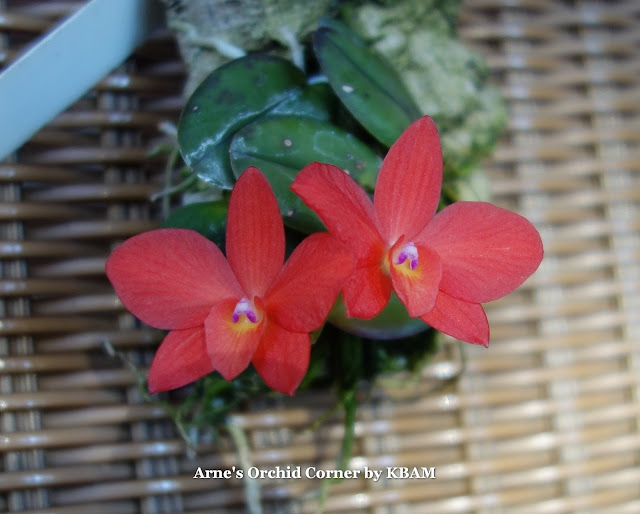 |
Masdevallia Elven Magic |
When our Paphiopedilum philippinense was awarded the judges' choice in May 2018, at the Maryland Orchid Society, we received this orchid as a prize. Our Masdevallia Elven Magic is a primary hybrid between Masd. davisii and Masd. infracta. My first post about this Masdevallia was on October 21, 2018. This orchid is known to require cooler conditions and relatively high humidity. After more than one year in our hands, Arne made a few observations on how to best care for this orchid.
Arne noticed that Masdevallia is much more sensitive to strong light than for example, Paphiopedilum. He found that this orchid needs less fertilizer than most orchids. Although this orchid is known to prefer cooler conditions, it does not need cold conditions to grow well. However, cooler temperatures definitely bring out the deep red in the flowers to the fullest.
This year our Masdevallia Elven Magic thrived and produced eight flowers which opened simultaneously. As the flowers wilt, it is still continuously producing new buds.
 |
| A) Our Masdevallia Elven Magic in December 2019. |
 |
| B) A brief photo session outdoors. |
 |
| C) Two dark red flowers up close. |
This will be my final post for 2019. I hope you have found my blog interesting and will join me again next year. Until then, I wish everyone a Happy and Prosperous and Peaceful New Year.














































